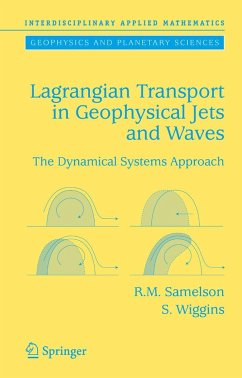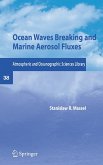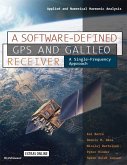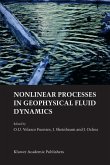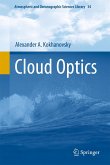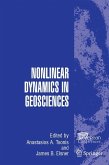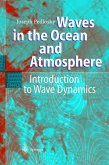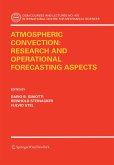The purpose of this book is to provide an accessible introduction to a new set of methods for the analysis of Lagrangian motion in geophysical ?ows. These methods were originally developed in the abstract mathem- ical setting of dynamical systems theory, through a geometric approach to di?erential equations that ultimately owes much to the insights of Poincar´ e (1892). In the 1980s and 1990s, researchers in applied mathematics and ?uid dynamics recognized the potential of this approach for the analysis of ?uid motion. Despite these developments and the existence of a substantial body of work on geophysical ?uid problems in the dynamical systems and geophysicalliterature,nointroductorytexthasbeenavailablethatpresents these methods in the context of geophysical ?uid ?ow. The text is meant to be accessible to geophysical ?uid scientists and students familiar with the mathematics of ordinary (mostly) and partial (sometimes) di?erential equations. It assumes little or no prior knowledge of dynamical systems theory. An e?ort is made to explain concepts from a physical point of view, and to avoid the theorem and proof constructions that appear in dynamical systems texts. We hope that this book will prove usefultograduatestudents,researchscientists,andeducatorsinanybranch of geophysical ?uid science in which the motion and transport of ?uid, and ofmaterialscarriedbythe?uid,isofinterest.Wehopethatitwillalsoprove interesting and useful to applied mathematicians who seek an introduction to an intriguing and rapidly developing area of geophysical ?uid dynamics.
Hinweis: Dieser Artikel kann nur an eine deutsche Lieferadresse ausgeliefert werden.
Hinweis: Dieser Artikel kann nur an eine deutsche Lieferadresse ausgeliefert werden.
From the reviews:
"A strong understanding of Lagrangian approaches to the transport and stirring of fluid often benefits from mental visualization. One must picture diverging fluid and evolving material curves that deform and tangle about each other. A successful introduction to this subject should facilitate this description, and this fine monograph by Roger Samelson and Steve Wiggins does so effectively. The book is written primarily for students and researchers in the geosciences." (Larry Pratt, SIAM Review, Vol. 49 (4), 2007)
"Samelson and Wiggins aim to provide an accessible introduction to modern mathematical techniques to explore transport and exchange in geophysical flows. ... The book is very well structured. ... Each chapter has a good introduction and concludes with a good summary. The book undoubtedly reads well. ... The four appendices provide interesting extra information. The two page index is adequate. Over nine pages of references ensures the bibliography provides valuable pointers into recent research. ... In summary: lovely material, well written ... ." (Anthony John Roberts, Mathematical Reviews, Issue 2008 f)
"The purpose of the monograph is to explore some of the new insights into Lagrangian motion in geophysical flows followed from such approach and to present an accessible introduction to the basic elements of some of these methods. ... The monograph will be useful for applied mathematicians, especially working in geophysical fluid dynamics." (Boris V. Loginov, Zentralblatt MATH, Vol. 1132 (10), 2008)
"A strong understanding of Lagrangian approaches to the transport and stirring of fluid often benefits from mental visualization. One must picture diverging fluid and evolving material curves that deform and tangle about each other. A successful introduction to this subject should facilitate this description, and this fine monograph by Roger Samelson and Steve Wiggins does so effectively. The book is written primarily for students and researchers in the geosciences." (Larry Pratt, SIAM Review, Vol. 49 (4), 2007)
"Samelson and Wiggins aim to provide an accessible introduction to modern mathematical techniques to explore transport and exchange in geophysical flows. ... The book is very well structured. ... Each chapter has a good introduction and concludes with a good summary. The book undoubtedly reads well. ... The four appendices provide interesting extra information. The two page index is adequate. Over nine pages of references ensures the bibliography provides valuable pointers into recent research. ... In summary: lovely material, well written ... ." (Anthony John Roberts, Mathematical Reviews, Issue 2008 f)
"The purpose of the monograph is to explore some of the new insights into Lagrangian motion in geophysical flows followed from such approach and to present an accessible introduction to the basic elements of some of these methods. ... The monograph will be useful for applied mathematicians, especially working in geophysical fluid dynamics." (Boris V. Loginov, Zentralblatt MATH, Vol. 1132 (10), 2008)
A successful introduction to this subject should facilitate this description, and this fine monograph by Roger Samelson and Steve Wiggins does so effectively. The techniques and examples discussed provide a unique view of important processes that form the basis for general intuition about fluid flows. LARRY PRATT Woods Hole Oceanographic Institution

